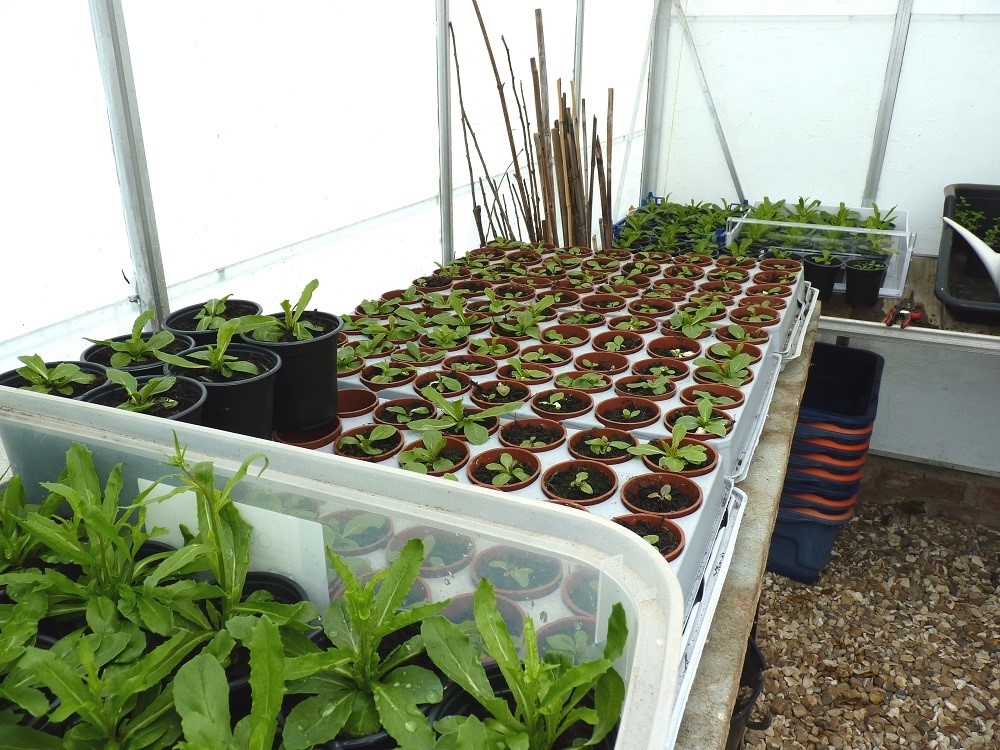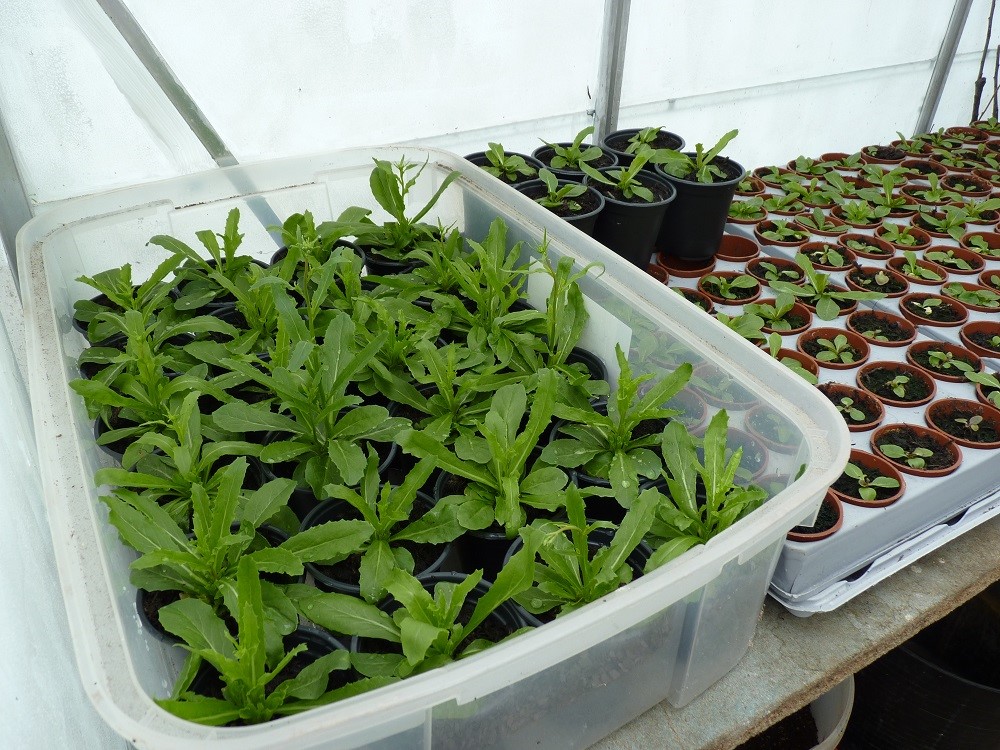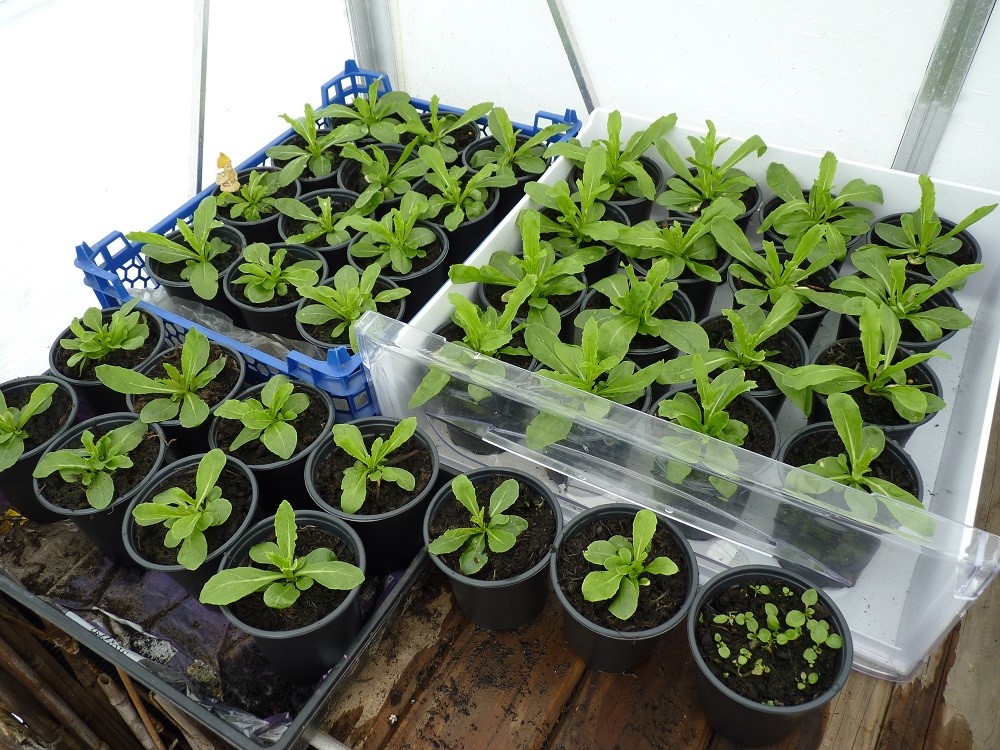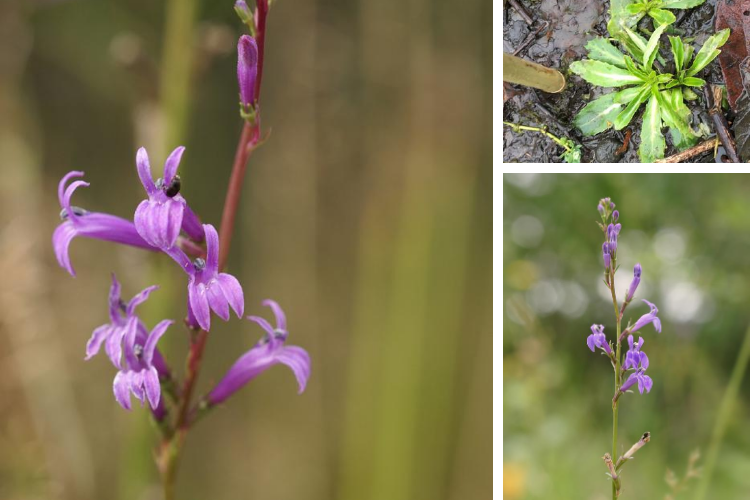The Heath Lobelia is one of our ‘elusive eight’ special species and our dedicated team of volunteers, or Heath Lobelia Champions as we call them, work tirelessly towards its conservation. Alison Scrase, an National Landscape Ambassador and volunteer from the group, has achieved remarkable results in cultivating new plants for replanting.
Why Heath Lobelia?
The remarkable Heath Lobelia is a purple flower that blooms from July to September. Nicknamed ‘Flower of the Axe’ by 19th century botanists, the Heath Lobelia holds a significant connection to our local heritage and was once abundant across Kilmington Common.
In Decline
Today, the rare plant’s last native spot within East Devon, is in the grounds of a private cottage in Axminster. Various factors, including the loss of heathland, reduced commons-style grazing, and deteriorating habitat quality have led to this sad decline and with only six other remaining native sites in the UK (Cornwall, Devon, Dorset, Hampshire, and Sussex), the urgency to protect this vulnerable plant is clear.
Seeds for Safeguarding
Follow Alison’s detailed conservation journey from autumn 2022 to present, in her quick photo update below.
Autumn 2022.
Initial seed collection from the cottage and a work day to help clear the site of brambles.
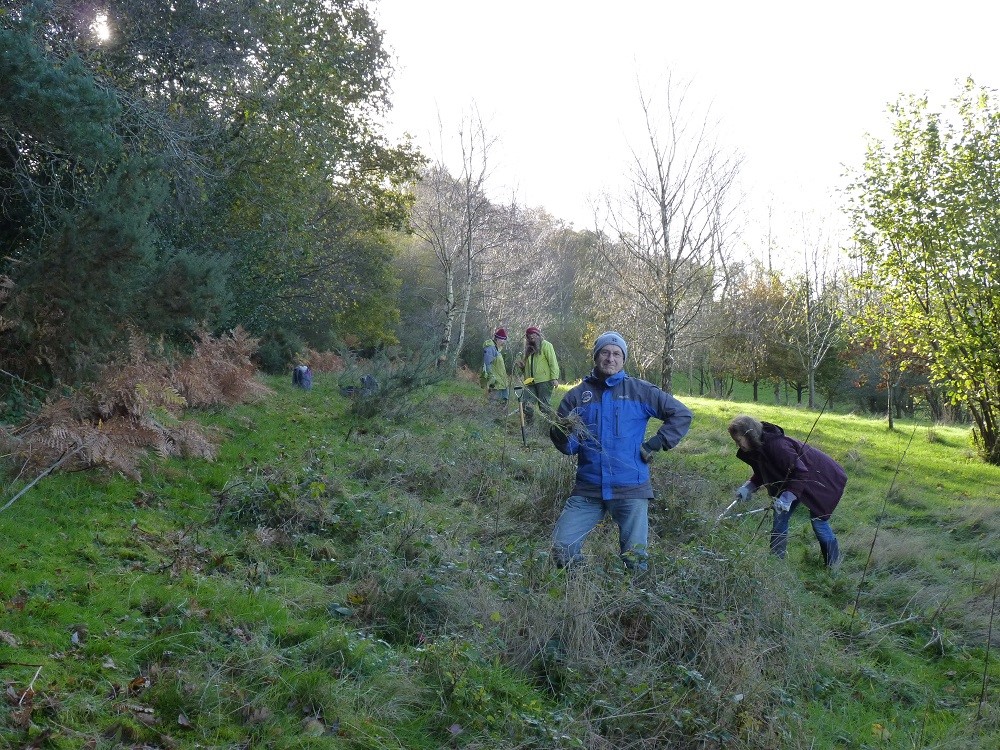
March 2023.
Results after spending the winter planted in an unheated greenhouse. A noticeable difference – ericaceous compost (right) was the favourite.
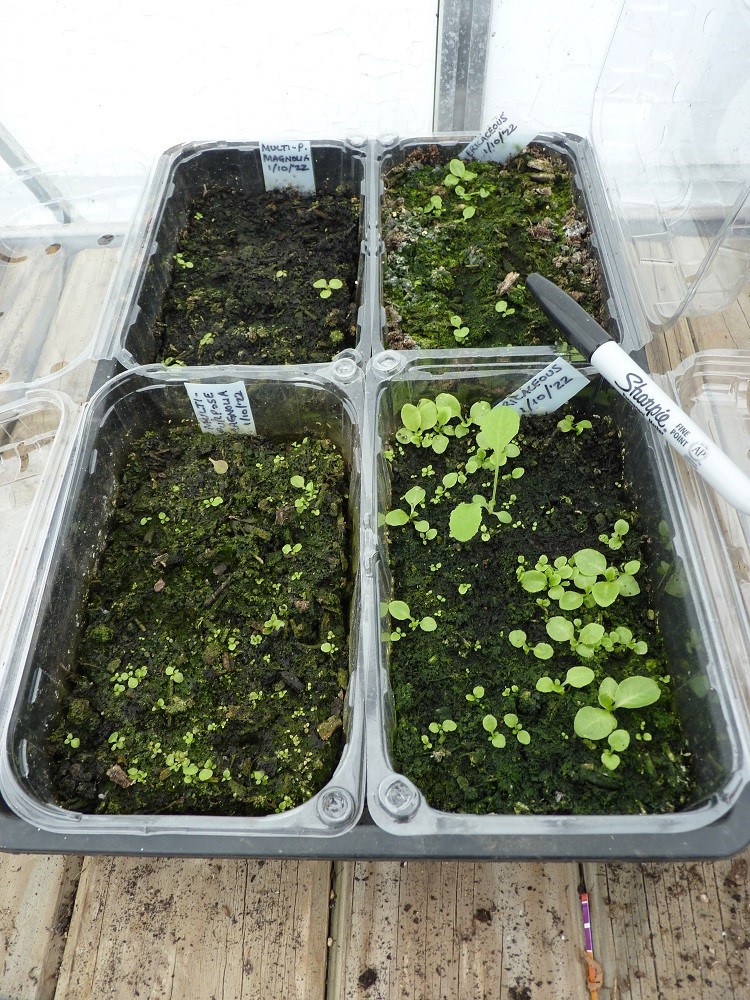
Although seeds still managed to germinate in multi-purpose (left), their root systems were noticeably inferior when it came to repotting seedlings of a similar size. It seemed that the multi-purpose did not have enough fibrous material and set too dense a medium around the roots as they tried to develop.
A couple of methods I would avoid in future (not pictured).
- Tried adding perlite to one tray of compost – it didn’t retain nearly enough water and was unsuccessful. Obvious with hindsight.
- Sowed seeds in slightly acidic soil straight from our front garden. Unfortunately, the seedbank of garden weeds enjoyed the pampering and swamped the tray in no time!
Bonus seeds!
Found in March 2023 clinging with static to the original collection bag, from the previous autumn. I wiped the bag across a pot of multi-purpose compost to see what would happen.
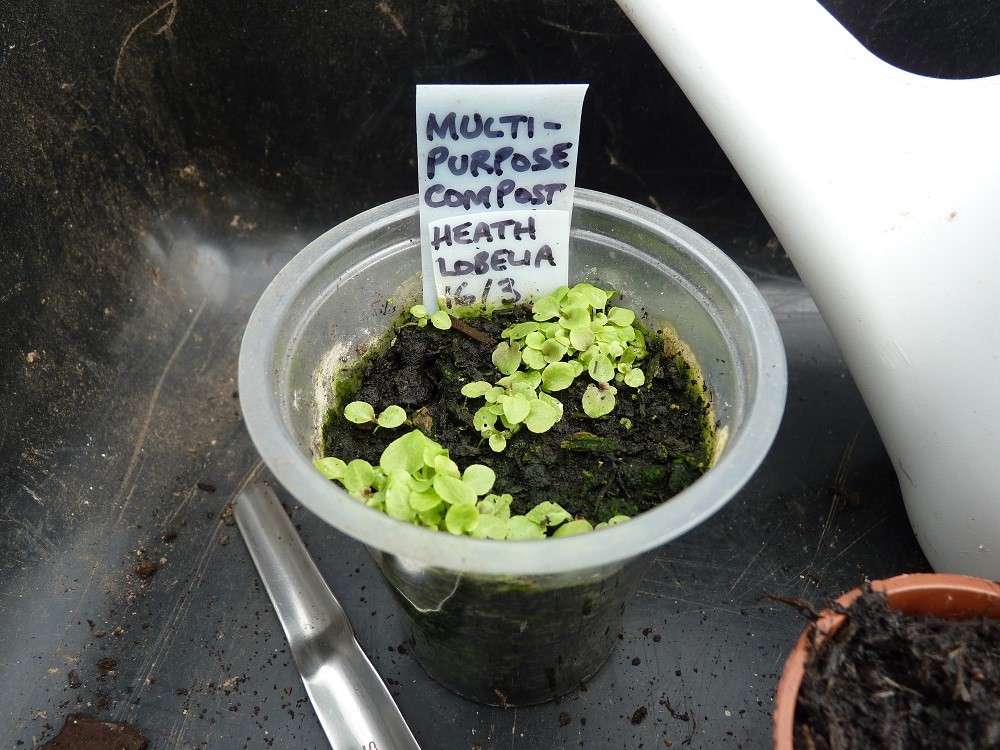
Again, the germination was fine but it then became apparent that they were struggling to develop further without ericaceous compost. Once transplanted, they soon caught up.
In hindsight, I think it might have been easier to wait until March for sowing most of the seeds rather than fretting over them all winter! The ‘bonus’ seeds had also spent the winter in the unheated greenhouse, albeit in a zip-lock bag.
May 2023.
Pricking out the seedlings. Did this in stages as each became large enough to handle. They kept on coming.
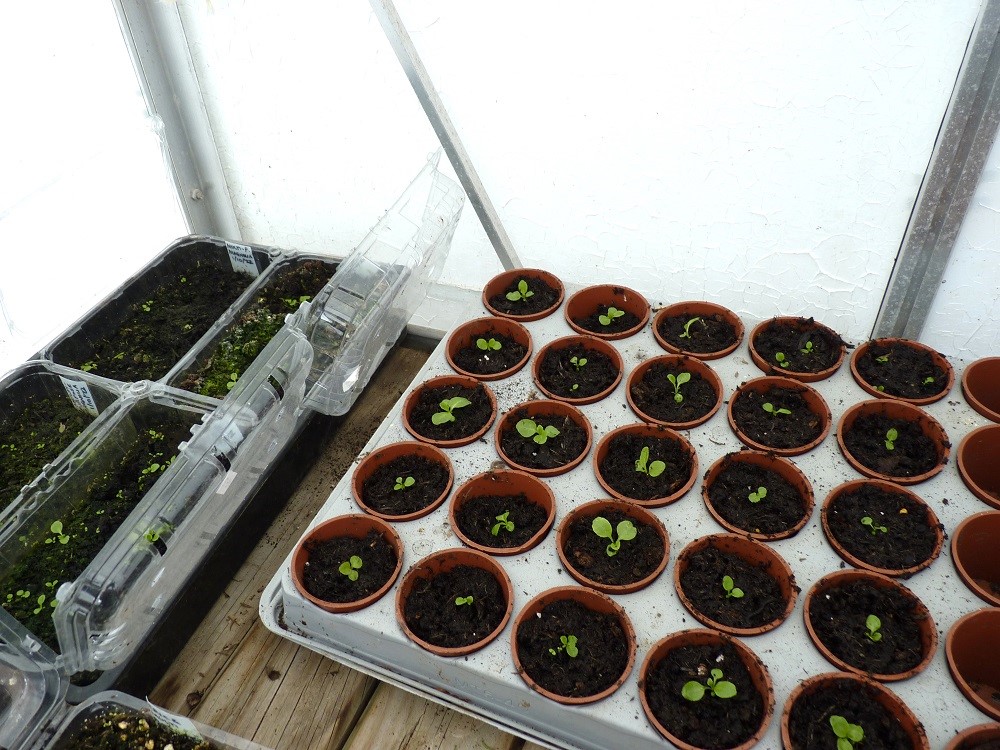
Beginning of June 2023.
Seedlings were finding their feet. Soil was not allowed to dry out at all and they seemed quite happy.
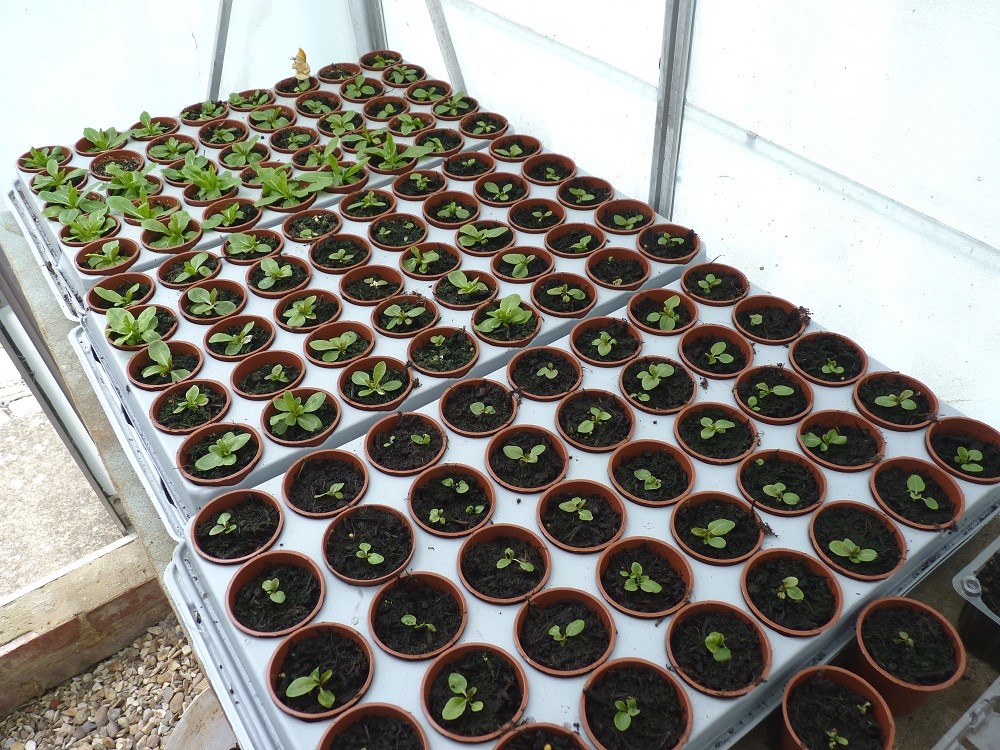
Now – end of June 2023.
Welcome to my home nursery – eek! I had to order some larger 9cm pots as many seedlings were outgrowing their originals. At the latest headcount, it would seem that we have 100 ‘tiddlers’ and 60 or so in the larger, black 9cm pots. The roots haven’t yet had time to fill these properly. There may be a few more starter pots once big enough to prick out – but really only a handful.
